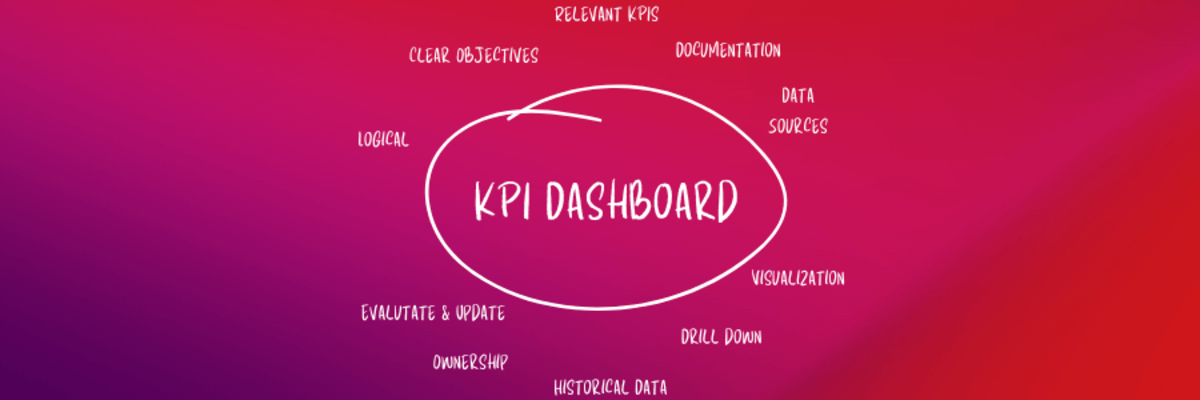10 Crucial Tips for Effective KPI Dashboarding
30 January 2024

Modern business is quick, sometimes lightning fast, and assessing performance and aligning efforts with organizational objectives is paramount. Key Performance Indicators (KPIs) play a pivotal role in this process, offering a comprehensive view of strategic goals and highlighting areas that demand attention. To harness the full potential of KPIs, businesses often rely on a well-crafted KPI dashboard.
A KPI dashboard serves as a centralized hub, presenting a visual representation of pertinent metrics side by side. Whether tailored for a team, department, or the entire organization, a well-designed KPI dashboard can be a game-changer. In this blog post, we present 10 essential tips to guide you in creating an effective and impactful KPI dashboard.
1. Define Clear Objectives: Before embarking on the creation of your KPI dashboard, it is crucial to define your business objectives and goals. Align the selected KPIs directly with these objectives to ensure that you measure what truly matters to your organization. Engage with stakeholders and business partners in a collaborative effort to identify essential metrics.
2. Ensure Relevance of KPIs: Each proposed KPI should be scrutinized for its relevance. A good KPI dashboard provides actionable insights that guide decision-making. Ask yourself about the potential actions to take based on each indicator, and avoid including metrics that do not drive decisions or improvements.
3. Prioritize Documentation: Thorough documentation is essential when crafting a KPI dashboard. Every KPI must have a clear and accepted definition. End users should easily access understandable definitions, datasources, and data transformations to comprehend the impact of each KPI.
4. Define Datasources Clearly: Identify and define the required datasources for building your indicators' actuals and targets. Ensure data accessibility and aim for regular data refreshes to reflect the most current information. This practice enables quick responses to changes and trends within the organization.
5. Optimize Visualization: Regardless of the visualization tool used, prioritize a simple and recognizable look and feel in the dashboard. Choose suitable visualizations for your data and audience, keeping them aligned for clarity. Consider the various devices users might employ, ensuring accessibility in all situations.
6. Organize KPIs Logically: Organize your KPIs logically, using categories or groups. This facilitates ease of navigation for stakeholders and users, helping them locate the necessary information and understand the relationships between different metrics. Developers can benefit from a well-structured dashboard for efficient updates.
7. Enable Drill-Down Capability: Provide users with the ability to drill down into the data for more detailed insights. This enhances understanding, allowing the identification of root causes for both issues and successes. The drill-down feature can be embedded within the dashboard or linked to other relevant metrics outside the dashboard.
8. Include Historical Data: Incorporate historical data to identify trends and patterns over time. This historical context is vital for informed decision-making and setting realistic goals. However, strike a balance to avoid overwhelming the audience with excessive data—include trends only if they add value for the end user.
9. Assign Ownership: Assign a business owner or team responsible for the dashboard. This entity should possess a deep understanding of business goals, indicators, and the technical aspects of maintaining the dashboard. Establishing ownership ensures accountability, ongoing improvement, and responsiveness to evolving organizational needs.
10. Regularly Evaluate and Update: A KPI dashboard is not a static project. Regularly evaluate your KPIs and dashboard design to ensure alignment with objectives and the changing needs of your organization. Be proactive in making updates to maintain relevance and effectiveness.
By adhering to these 10 tips and consistently refining your KPI dashboard, you pave the way for a valuable asset that drives success and informed decision-making within your business. Should you encounter any challenges or seek further insights into KPI dashboarding, do not hesitate to reach out!
